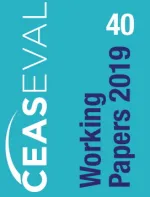Report containing the detailed models for a sustainable CEAS

This report provides various scenarios for possible policy futures in the context of the CEAS. These scenarios are based on the research done by work packages 1 to 7 of the CEASEVAL project and, in particular, the stakeholder discussions convened within work package 7. All 3 sets of scenario packages include 4 scenario narratives that describe possible policy futures in the context of secondary movement, reception and responsibility-sharing in the EU. These scenario narratives were subject for discussion in the stakeholder workshops and enhanced our understanding of what the challenges in the CEAS are. As we intended to draft models that could lead to a more sustainable and equitable asylum framework in the EU, these scenario narratives helped to find solutions that might increase the sustainability and equity of the CEAS. After we discussed the scenarios, we believed that most scenarios are vulnerable when inflows of migrants reach peak levels such as in 2015 and 2016. However, to transform the CEAS into a sustainable and equitable common asylum and migration framework this deliverable points towards three possible fundamental changes that might make the CEAS more sustainable and foster equity. First, for local and regional authorities (LRAs) to follow their local logic and needs one might suggest that they could benefit from direct EU funding and more autonomy from the Member States in the field of asylum and refugee integration policies. Second, this might include discretionary powers to grant some (limited) form of citizenship based on the notion of ‘jus domicile’ regardless of formal legal status. Third, it might considerably increase the odds of effective inclusion of refugees and thus reduce societal costs, if the EU were to have a refugee status valid for all its member states or the right for refugees to have their protection status transferred from one Member State to the other.
Keywords: scenario building, refugees, CEAS, reception, secondary movement, responsibility-sharing